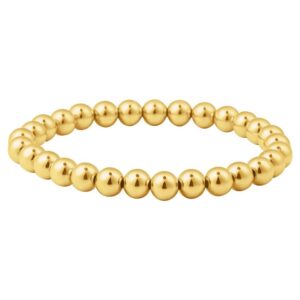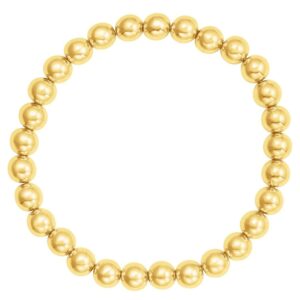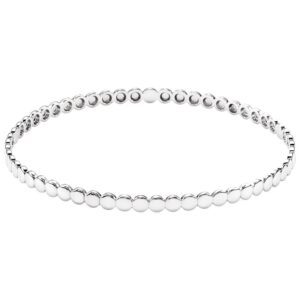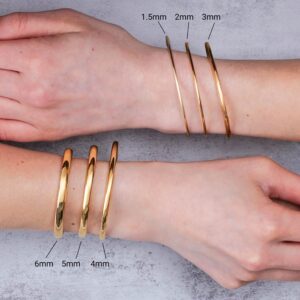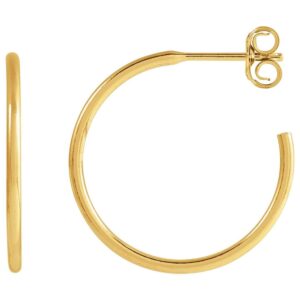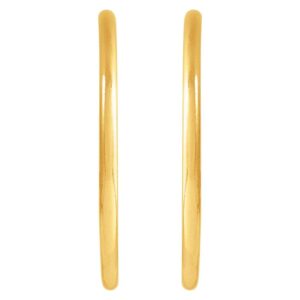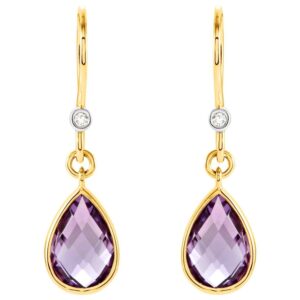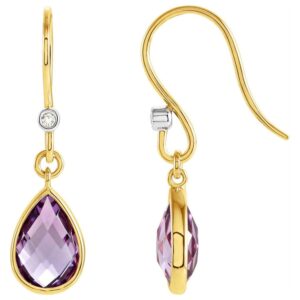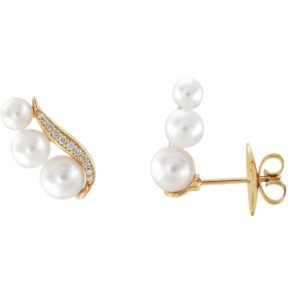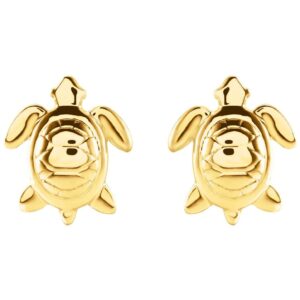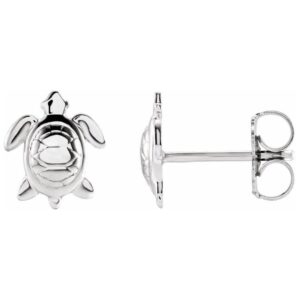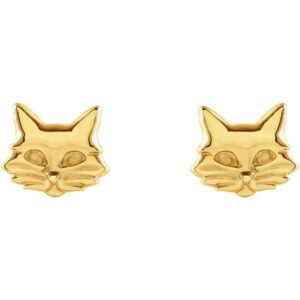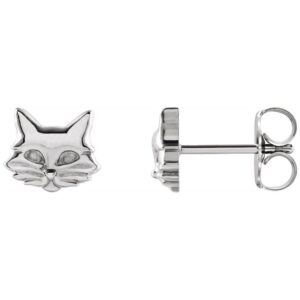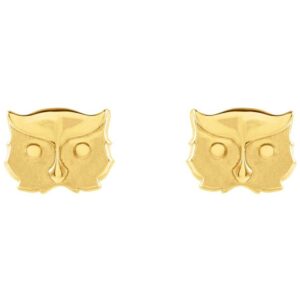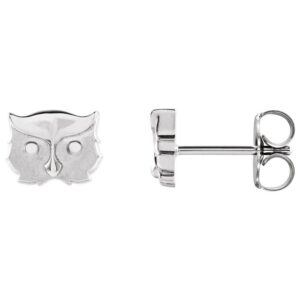So, you’re planning on getting your ear stretched…
But what ear gauge size do you want?
Do you want small ear gauge sizes or large ear gauges?
If you have no idea, then let’s walk you through the ear gauge sizes to help.
Here, we’ll talk about:
- What are ear gauge sizes
- Ear gauge sizes chart
- Ear gauge sizes in mm
- What ear gauge size should you get
- FAQs
With this, you’ll learn everything you need to know. In turn, you’ll be able to determine what ear gauge size to get.
So without further ado, let’s begin!
While exploring your ear gauge sizes, check out our stylish collection: Gold Earrings
What are Ear Gauge Sizes?
Have you ever heard of the term 18g or 16g piercings?
That is referring to the size of the ear gauge.
Or to be more specific, the size of the piercing that will bore through your ears and make it “more stretched”.
But how do ear gauge sizes work?
Now, when it comes to ear gauge sizing, it can get a bit confusing. This is because the larger you want the stretch, the smaller the gauge.
It’s important to always keep this in mind.
I mean, you don’t want to make the mistake of asking for a small ear gauge when all you wanted was a small piercing, do you?
Ear Gauge Sizes Chart
I know, I know, it’s confusing.
However, this ear gauge size chart with pictures can help.
NOTE: “ga” refers to gauge, “mm” is millimeters, and “in” means inches. These are three of the most basic measurements used.
Notice how, when it turns into inches, it reverses. Now, the smaller the number, the smaller the piercing.
If you ever get confused, you can always refer back to this chart.

Ear Gauge Sizes in MM
Okay, let’s make it easier for you.
If you don’t want to worry about small gauges being bigger piercings, while fewer inches are small piercings, then just use millimeters (mm).
Using millimeters is more straightforward. Let’s take a look at the ear gauge sizes in mm.
| Millimeters (mm): | Gauge (G): |
| .812mm | 20G |
| 1mm | 18G |
| 1.2mm | 16G |
| 1.6mm | 14G |
| 2mm | 12G |
| 2.4mm | 10G |
| 3mm | 8G |
| 4mm | 6G |
| 5mm | 4G |
| 6mm | 2G |
| 7mm | 1G |
| 8mm | 0G |
| 9mm | 9mm |
| 10mm | 00G |
| Millimeters (mm): | Inches (in): |
| 11mm | 7/16in |
| 12mm | 1/2in |
| 14mm | 9/16in |
| 16mm | 5/8in |
| 18mm | 11/16in |
| 19mm | 3/4in |
| 22mm | 7/8in |
| 24mm | 15/16in |
| 25mm | 1in |
| 28mm | 1 and 1/16in |
| 29mm | 1 and 1/8in |
| 32mm | 1 and 1/4in |
| 35mm | 1 and 3/8in |
| 38mm | 1 and 1/2in |
| 42mm | 1 and 5/8in |
| 44mm | 1 and 3/4in |
| 47mm | 1 and 7/8in |
| 50mm | 2in |
What Ear Gauge Size Should You Get
Of course, the size will depend entirely on you.
However, if you’re not sure, then know that 16g and 14g are the most common for newbies. This is a good starting point since it’s the size of a regular earring hole.
And as you know, earring holes are pretty basic.
What if these small sizes are too tame for you? The next best thing to get is the 2g — this is because, once you go over 2g, it will be the point of no return, meaning you won’t be able to fully close the hole anymore.
If you’re convinced that you want large ear stretchings, then you can start off with the 00 gauges.
From there, you can slowly start to stretch it more and more.
The problem with stretching it too much too soon is that it can cause blowouts, lobe tears, and infections. So it’s always best to go slowly but surely.
FAQs
Got some questions about ear gauges/stretching? Then let’s give you even more information by answering some of the most frequently asked questions.
How painful is ear stretching?
This is probably one of the first questions that will pop up in your mind if you decide to do ear gauging/stretching.
The answer is that pain is subjective.
To some, it won’t be anything more than a slight sting. To others, it might be very painful, but only for a short while.
It will all depend on your pain tolerance.
But here’s the thing — if you want to avoid lasting sharp pain, then always start small. If you do, the pain will only be discomfort, slight soreness, or a burning sensation.
Can your ears go back to normal after stretching?
Here’s another really common question.
And the answer depends on the ear gauge size you get.
As we mentioned, the point of no return is at 2g. Anything smaller than that can still fully close.
But once you go over 2g, you will have to consider cosmetic surgery to make your ear go back to normal.
What are the best ear gauge materials?
Here is a list of the best and safest materials to use with your ear gauge:
- Steel
- Acrylic
- Single-flared glass
- Titanium
- Silicone
- Finished wood
- Polished stone
- Other non-artificial materials
How long do ear gauges heal?
Your ear gauge can heal anywhere between 2 to 6 months.
If you want a bigger piercing, then make sure that it is fully healed before you add another ear gauge size.
What are the side effects of ear gauging?
Watch out for these negative side effects of ear gauging:
- Blowouts
- Inflammation
- Infection
- Excessive bleeding
- Ripped earlobe
- Fever
- Swelling
- Pus
- Scabs
How do you care for your ear gauges?
To avoid these negative side effects, make sure that your ear gauge is cleaned regularly.
And when we say regularly, we mean 2 times a day.
Don’t worry, the cleaning process is super simple.
Just follow these steps:
- Wash your hands with antibacterial soap and dry them
- Wash your ear gauge with warm water
- Put a chemical-free soap
- Rinse the soap off with warm water
- Wash your earlobes with a saline or sea salt solution (you can make the sea salt solution by mixing ¼ tsp of sea salt into 1 cup of water
That’s it!
And here are other ways to care for your ear gauge to make it heal faster:
- Rub coconut oil, jojoba oil, or any safe oil into your earlobes to moisturize them.
- Avoid touching the gauge, especially if your hands are dirty
- Make sure it doesn’t get stuck on anything to avoid pulling or stretching
Conclusion
And that concludes your complete guide to the ear gauge sizes.
As we saw, the smaller the gauge number, the bigger the piercing. On the other hand, the smaller the inch, the smaller the piercing.
If that’s too confusing for you, then you can simply use ear gauge sizes in mm — the smaller the number, the smaller the piercing.
So now that you know everything you need to know, the final question is…
Should you get an ear gauge?
Discover Our Latest Jewelry Collection
Explore the newest jewelry pieces that will add elegance to your style. Necklaces, bracelets, rings, and earrings designed to complete your look.
- $1,099 This product has multiple variants. The options may be chosen on the product page
- Price range: $92 through $249 This product has multiple variants. The options may be chosen on the product page
- Price range: $57 through $99 This product has multiple variants. The options may be chosen on the product page
- $899 This product has multiple variants. The options may be chosen on the product page
- $399 This product has multiple variants. The options may be chosen on the product page
- $499 This product has multiple variants. The options may be chosen on the product page
- $599 This product has multiple variants. The options may be chosen on the product page


